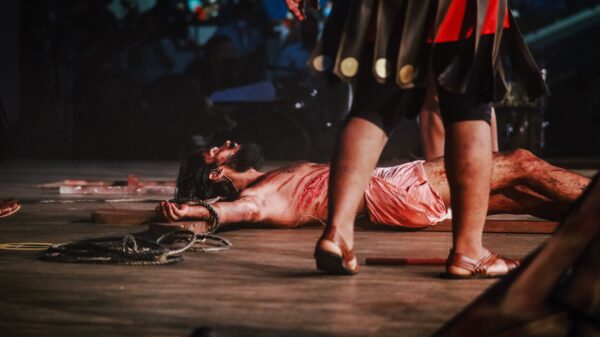Movies have the power to inspire, move and entertain us like nothing else. Whether it’s a blockbuster hit or an indie gem, every film has its own unique language that speaks directly to our emotions and senses. As avid moviegoers, we often find ourselves discussing films with friends and family members – analyzing the performances, dissecting the plot twists and debating the directorial choices. But how do we put into words what we experience on screen? In this blog post, we’ll explore the art of film critique and help you understand the language of cinema so you can articulate your thoughts more effectively. So grab some popcorn, sit back and let’s dive in!
Introduction to Film Critique
When it comes to film, there are a lot of different ways to interpret and understand the art form. However, in order to truly appreciate cinema, it is important to learn the language of film critique. This language can help you better understand how movies are made, the different techniques used by filmmakers, and how to approach films from a critical perspective.
One of the first things you need to know when learning the language of film critique is the difference between criticism and review. A review is simply a summary of a film that includes your personal opinion. A critic, on the other hand, offers a more in-depth analysis of the movie. They will often discuss the technical aspects of filmmaking, as well as offer their interpretation of the film’s themes and messages.
In order to write a good film critique, you need to be able to identify the different elements that make up a movie. These elements include plot, cinematography, acting, editing, sound design, and more. Once you have a good understanding of these elements, you can start to analyze how they work together (or don’t work together) to create meaning in a film.
It is also important to remember that there is no right or wrong way to interpret a movie. The beauty of cinema is that it can be interpreted in many different ways. As long as you can back up your interpretation with evidence from the film itself, then your critique will be valid.
So if
Key Elements of a Film Review
When writing a film review, there are key elements that need to be included in order to effectively communicate your thoughts and feelings about the movie. These elements include:
1. A brief summary of the plot – This should be a short, one or two sentence synopsis of what the movie is about.
2. Your opinion of the film – Was it good? Bad? Mediocre? Why?
3. The technical aspects of the film – How was the cinematography? The acting? The editing?
4. The themes of the film – What did the movie say about its subject matter?
5. Your overall thoughts and feelings about the film – Would you recommend it to others? Why or why not?
By including these key elements in your review, you will give readers a well-rounded look at what you thought of the movie and why.
Analyzing Plot, Characters, and Setting
“Analyzing Plot, Characters, and Setting” is the bread and butter of film criticism. In order to understand the language of cinema, one must be able to analyze the basic building blocks of a film. These three elements are essential in understanding how a film communicates its story and messages to the audience.
When analyzing plot, critics look at the structure of the story and how it is told. They examine the film’s use of time, its pacing, and its overall narrative arc. Character analysis looks at how the characters are developed and how they interact with each other. Critics also consider the film’s setting when analyzing plot and character. The setting can provide important clues about the characters’ motivations and objectives.
Last but not least, critics also analyze the film’s themes and motifs. Themes are the big ideas that a film is exploring, while motifs are recurring elements that reinforce these themes. By understanding these three elements – plot, character, and setting – critics can begin to unravel the complex language of cinema.
Analysing Cinematography and Sound
Cinematography and sound are two of the most important aspects of any film. They both contribute to the overall tone and atmosphere of the Film Critique Art, and can be used to great effect in order to create a certain mood or feeling.
Sound is often used to create tension or suspense, while cinematography can be used to set the scene and establish a visual style for the film. Together, they can be used to create a powerful and immersive experience for the viewer.
When analysing these elements, it is important to pay attention to how they are used in relation to each other. For example, if the sound is very loud and chaotic, but the cinematography is calm and composed, this contrast can be used to create a sense of unease or tension.
It is also important to consider the overall effect that these elements have on the viewer. Are they working together to create a cohesive experience, or are they working against each other? This is something that can only really be determined by watching the film multiple times and paying close attention to how the different elements work together.
Understanding Dialogue and Genre
In order to truly understand and appreciate the art of film, one must first understand the language of cinema. This includes understanding both dialogue and genre.
Dialogue is the written script that the actors recite. It is what brings the story to life and allows the audience to connect with the characters. Genre is the category that a film falls into based on its style, content, and/or structure. There are many different genres of film, each with their own unique conventions.
By understanding both dialogue and genre, one can begin to see how Film Critique Art are constructed and why certain elements are used. This knowledge enhances one’s ability to critically analyze a film and appreciate its artistry.
Evaluating Performance
When it comes to evaluating the performance of a film, there are a number of factors to take into account. First and foremost, does the film achieve its goals? If a film is trying to be funny, does it succeed in making you laugh? If it’s a drama, does it make you feel invested in the characters and their stories?
Beyond that, there are also technical aspects to consider. Is the acting good? Are the visuals pleasing to look at? Is the editing tight and effective? These are all elements that contribute to whether or not a film is successful.
Ultimately, it’s up to the individual viewer to decide whether or not they liked a particular film. But by taking into account all of the different elements that go into making a movie, you can develop a more well-rounded opinion on whether or not it’s worth your time.
Critiquing Theme and Message
A film’s theme is its central message or main idea. The theme of a film can be its driving force, providing insight into the characters, plot, and setting. A film’s theme can also be more abstract, addressing universal concepts and emotions.
When critiquing a film, it is important to consider both the theme and the message. The theme is what the Film Critique Art is saying, while the message is how that theme is communicated. A film can have an interesting or unique theme, but if the message is unclear or muddled, the film will not be successful.
To effectively critique a film’s theme and message, it is necessary to have a strong understanding of cinema as a language. Just as spoken languages have grammar and syntax, cinema has its own set of rules and conventions. By understanding how this language works, you will be better equipped to spot flaws in a film’s themes or messages.
Conclusion
In conclusion, Film Critique Art is an art form that requires one to have a deep understanding of the language of cinema. By familiarizing yourself with the basics and taking time to analyze films critically, you can develop your own unique style of review writing. The study and analysis of films is not only enjoyable but also helps you appreciate them at a much deeper level. As you continue on this journey, don’t forget to enjoy every moment!










